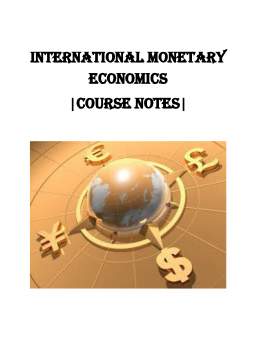Cuprins
- C1: CURRENCY: DEFINITION, COMPONENTS AND INTERNATIONAL CURRENCIES.1
- C2: EXCHANGE RATE REGIMES.11
- C3: THE INTERNATIONAL MONETARY SYSTEM OF BRETTON WOODS.21
- C4: THE PRESENT INTERNATIONAL MONETARY SYSTEMS.28
- C5: THE EUROPEAN MONETARY SYSTEM.36
Extras din curs
CHAPTER 1
CURRENCY: DEFINITION, COMPONENTS, INTERNATIONAL CURRENCIES
1.1. Currency: definition, components
The definition of money is present in the work of many economists, being the results of some generalisations of the monetary practice in the era in question. As any other generalisation, the definition of money too tries to give the essence aspects, related, mainly, to the functions and the role of money within the economy, leaving aside aspects considered insignificant at that date or from the researcher’s point of view. Sooner or later, these insignificant aspects have proved to be factors of maximum importance, fundamentally changing the way of interpreting the money category; this fact explains the periodical return to the definition of money.
2 ideas regarding
the first one, which considers money a merchandise with special characteristics, coming from the varied world of merchandise
the second one, according to which money is an expression of people’s will, a sign or a debt on the issuer or the economy.
Opinions on the currency concept
the definition of currency made the object of numerous debates and controversies, subject which has not been ran out or abandoned not even nowadays
the explanation of this tireless and permanent preoccupation consists of the key position of currency in the national and international economy, as knowledge and exchange instrument
the currency synthetically reflects the structural changes in the economy and society, getting modified also, in the direction set by the real economy, but generating in its turn amplification or breaking effects
currency has been recognised as management instrument of the economic activity and the economic science started to grant the monetary problems a main place within the larger frame of economy and micro, macro and mondoeconomic management.
Observation: The research of the money economic category must start from an unquestionable truth, verified by the monetary practice, namely that money comprises the two components – standard money and sign money
Standard money
is a measure unit which concentrates value in its quantitative and qualitative dimensions, having characteristics specific to the goods it measures;
is the result of a concrete economic process, receiving from it a quantitative value (the size of the value concentrated in the standard money).
Currently the standard money is represented by the purchasing power of the monetary unit
2Sign money
is the result of a social signification process, process which gives a sign, upon a set convention, the right to represent another entity (phenomenon, process) distinct from it;
it reflects in the money circulation and economic communication process the phenomenon of obtaining and manage the value.
Forming of sign money and standard money
Sign money
- national metallic coins;
- national paper (plastic) money;
- national account money;
- payment instruments (bills of exchange, promissory notes, cheques etc.) expressed in national monetary units;
- coins, paper money, account money and payment instruments expressed in monetary units from other countries than the reference country, under the name of currency or currencies;
- account money and payment instruments expressed in international monetary units.
Standard money
- the gold from the bank supplies, as a relic of the ancient monetary mechanisms or as a psychological means for the clients of the bank.
- the merchandises and the services from the national economy.
- merchandises and services from other national economies for which an economy holds international currencies in its supply.
1.2. Currencies used on the international market
One raises the question of the money signs which circulate within international context. Imitating in great part the national practice, the international monetary practice uses a large range of signs which spreads the money information on value and which have the characteristics of a money sign.
• to comprise a sufficiently safe support with the signs which give it national and international circulation power;
The conditions for money to be sign money
• to comprise the information on value, obtained thanks to an monetary standard accepted by the national and international monetary authorities;
• to observe the national and international convertibility criteria during the period of circulation or of keeping with the beneficiary.
Preview document
Conținut arhivă zip
- International monetary economics.pdf



























































